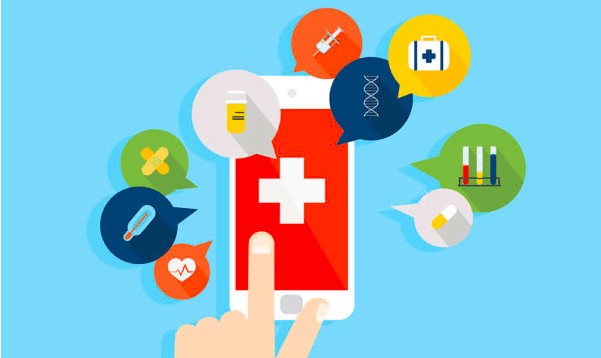Access to quality healthcare has historically been a significant global challenge, plagued by geographical barriers, socioeconomic disparities, and the sheer volume of demand. However, a profound transformation is underway, largely driven by the relentless march of technological innovation. From remote consultations to sophisticated data analytics, technology is systematically dismantling traditional obstacles, making healthcare more accessible, efficient, and personalized for millions around the world. This paradigm shift is not just an incremental improvement; it represents a fundamental reimagining of how healthcare is delivered and consumed, promising a more equitable and effective future for global well-being.
Perhaps the most visible and impactful technological advancement in enhancing healthcare accessibility is **telemedicine and virtual care platforms**. These solutions allow patients to connect with healthcare professionals remotely through video calls, phone calls, or secure messaging. This capability has been nothing short of revolutionary for individuals residing in rural or underserved areas, where specialists might be hundreds of kilometers away, or for those with mobility issues that make in-person visits challenging. Imagine an elderly patient with a chronic condition who can now have regular check-ups with their doctor from the comfort of their home, eliminating strenuous travel and wait times. Telemedicine not only bridges geographical divides but also enhances temporal accessibility, allowing for more flexible scheduling and often quicker access to medical advice, thereby reducing unnecessary emergency room visits and improving continuity of care.
Beyond real-time virtual consultations, the proliferation of **wearable health technology and remote patient monitoring (RPM) devices** is democratizing continuous health oversight. Smartwatches, fitness trackers, and specialized medical sensors can now continuously collect vital signs, glucose levels, heart rhythms, sleep patterns, and much more. This data can be automatically transmitted to healthcare providers, allowing them to remotely monitor patients with chronic conditions, detect subtle changes that might indicate a deteriorating health status, and intervene proactively. For instance, a patient with diabetes can have their glucose levels consistently tracked, alerting their doctor to out-of-range readings that might require medication adjustments before a crisis occurs. This shift from episodic care to continuous monitoring empowers patients to take a more active role in their health management and enables healthcare providers to offer personalized, preventative care, especially beneficial for vulnerable populations.
Furthermore, **Artificial Intelligence (AI) and Machine Learning (ML)** are rapidly transforming diagnostics and treatment planning, making expertise more accessible regardless of location. AI algorithms, trained on vast datasets of medical images and patient records, can assist clinicians in identifying subtle indicators of disease that might be missed by the human eye. In remote clinics lacking specialized radiologists, AI-powered tools can analyze X-rays or retinal scans and flag potential issues, allowing general practitioners to provide more accurate initial diagnoses or quickly refer to specialists. Similarly, AI can help analyze complex patient data to suggest personalized treatment plans, predict disease progression, and even accelerate drug discovery, democratizing access to cutting-edge medical insights and reducing reliance on limited specialist availability.
The rise of **digital health platforms and electronic health records (EHRs)** also plays a critical role in improving accessibility by streamlining information flow and empowering patients. EHRs centralize patient medical history, lab results, medications, and physician notes, making them instantly accessible to authorized healthcare providers across different facilities. This interoperability ensures continuity of care, reduces medical errors caused by incomplete information, and eliminates redundant tests. Patient portals, a component of many EHR systems, allow individuals to securely access their own health information, schedule appointments, request prescription refills, and communicate directly with their care team. This empowers patients with greater control over their health journey and facilitates better communication, turning them into active participants rather than passive recipients of care.
Finally, advancements in **mobile health (mHealth) applications and low-cost diagnostic tools** are bringing healthcare directly to people’s pockets and communities. Mobile apps can offer everything from medication reminders and symptom checkers to mental health support and chronic disease management programs. These tools often provide accessible, on-demand information and support that can prevent minor health issues from escalating. Concurrently, portable and easy-to-use diagnostic devices, like handheld ultrasound machines or teleretinal imaging cameras, enable basic screenings to be performed in community centers or remote villages, then transmitted to specialists for interpretation. This decentralized approach to diagnostics significantly reduces the need for patients to travel to large medical centers for initial assessments, expanding the reach of vital health services to previously underserved populations.
While challenges remain, including ensuring data privacy and addressing the digital divide to ensure equitable access, the trajectory is clear. Technology is fundamentally reshaping healthcare delivery, moving it from a centralized, often inaccessible system to a more distributed, patient-centric model. By leveraging telemedicine, wearable devices, AI, digital platforms, and mHealth tools, we are steadily building a future where quality healthcare is not a privilege determined by geography or economic status, but an accessible right for all, leading to healthier and more resilient communities globally.




